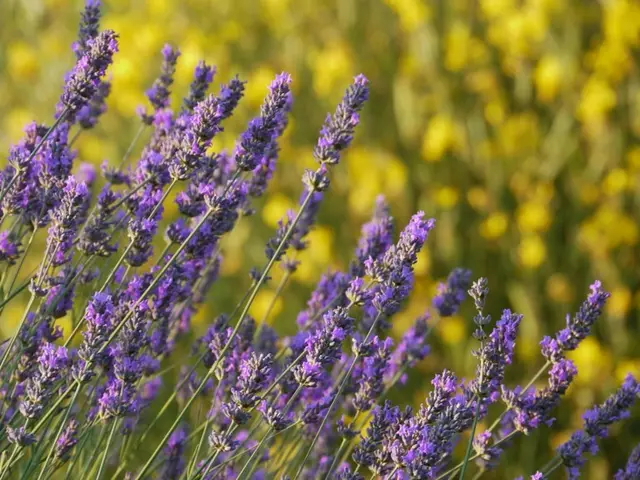Indoor Herb Garden Hacks for Thriving Greens
Tips for successful cultivation of an flourishing indoor herb garden:
Growing herbs inside your home can be a delightful pursuit, offering the endless allure of fresh flavors just a few steps away. But along with the basics, there are numerous subtle techniques that can take your indoor herb garden from simple to thriving. From light and humidity management to selecting the perfect containers, these minor adjustments can make a significant impact. Whether you're a novice or a seasoned grower, these insider tricks will help you unlock the full potential of your herbs while keeping your living space vibrant.
1. Opt for Unglazed Terra Cotta Pots for Improved Root Aeration
Unglazed terra cotta pots feature air and moisture permeable walls. This lets the roots breathe even in low-airflow conditions indoors and helps prevent overwatering. These pots also maintain cooler soil temperatures in cozy rooms, better supporting healthy root development compared to plastic ones. Herbs like rosemary and thyme especially appreciate this type of container.
2. Embrace Bottom Watering to Reduce Fungal Concerns
Watering herbs from the base encourages deeper root growth and guards against surface mold. It keeps leaves dry, thereby minimizing the risk of mold and fungal diseases. To adopt this method, merely place the pot in a shallow water tray and let the soil absorb the water through its drainage holes. After 20 minutes, lift the pot to avoid waterlogging. Herbs such as oregano and sage respond well to this gentle watering technique.
3. Rotate Pots Weekly for Balanced Growth
Turning your pots a quarter turn each week guarantees even exposure to sunlight or grow lights. This simple habit supports balanced leaf development and promotes straight stems, giving your indoor herb garden an attractive appearance. Herbs like basil and parsley benefit from consistent rotation.
4. Group Herbs with Similar Care Requirements
Not every herb shares the same care needs. Grouping those with similar demands aids in their thriving. For instance, rosemary and thyme perform well in drier conditions, while basil and mint prefer more moisture. Keeping herbs with similar light and water requirements together makes caring for them easier and prevents over- or under-watering. This method also contributes to a neater indoor herb garden.
5. Mist Leaves Lightly to Mimic Outdoor Humidity
Indoor air can be relatively dry, particularly during winter or homes with heating systems. Gently misting leaves helps recreate a more humid environment like what herbs would experience outside. This step is beneficial for tender herbs like basil or cilantro. Be sure to mist in the morning, allowing leaves to dry by night to help prevent mildew. A small spray bottle suffices for this daily routine.
6. Opt for Grow Lights Featuring Full-Spectrum LEDs
Reliable indoor sunlight can be limited, especially during shorter winter days. Full-spectrum LED grow lights deliver the optimal balance required by herbs for photosynthesis. These lights reproduce natural sunlight and can be set on timers to provide a daily-night cycle, aiding herbs' growth. They are energy-saving and do not overheat your plants. Grow lights are particularly handy when your living space lacks abundant windows.
7.Use Activated Charcoal Layer in the Pot to Improve Soil Health
Activated charcoal filters and absorbs impurities in the soil, cutting down on odors and enhancing drainage. Placed beneath the pot bottom, activated charcoal helps prevent root rot by preventing water stagnation. This method is especially beneficial in pots without drainage holes or when cultivating herbs in glass containers. The charcoal layer creates a purer environment for roots, particularly in warm indoor spaces where mold may develop more easily.
8. Fertilize Monthly with Diluted Liquid Seaweed or Fish Emulsion
Herbs require nutrients to grow strongly even indoors. A gentle, dilute combination of liquid seaweed or fish emulsion offers essential minerals without overwhelming the plant. These natural fertilizers stimulate steady, healthy growth and strengthen herb plants' resistance to stress. Monthly feeding is usually enough to support leafy herbs without promoting too much leggy growth.
9. Shake Herbs Gently to Build Stem Strength
Plants that grow outside benefit from wind, fortifying their stems. Indoors, you can mimic this by shaking herb plants a few times a week. This gentle movement encourages sturdier stems and prevents the floppy look some herbs can develop indoors. It is especially useful for herbs like dill or basil.
10. Use Cinnamon as a Natural Antifungal Defense
Cinnamon is more than just a spice; it serves as a natural antifungal that protects young seedlings and mature herbs from soil mold. By sprinkling a light layer of cinnamon on the soil surface, fungal spores stop from spreading. This trick is especially helpful in humid environments or when herbs are started from seed. It's safe for plants and easy to apply.
11. Regularly Harvest Herbs to Encourage Bushier Growth
Frequent harvesting convinces herbs to develop bushily rather than spindly. Snipping leaves just above a leaf node signals the plant to branch out, enhancing its appearance and boosting the number of usable leaves. Regular trimming prevents herbs like basil, mint, or oregano from blooming prematurely.
12. Make Use of Humidity Trays with Pebbles Under Pots
A humidity tray is a straightforward way to boost air moisture around herbs without overwatering. Simply fill a shallow tray with pebbles and water, then position the pot atop the pebbles. As the water evaporates, humidity nearby rises. This strategy benefits herbs that prefer mildly damp air, such as parsley and cilantro.
13. Reflect Light Nearby to Intensify Sunlight
Position white surfaces or mirrors close to your herb garden to reflect and amplify sunlight. This enhances the light your herbs receive without needing supplementary equipment. Effective for small apartments or dimly lit rooms. Angle the reflective surface to bounce light towards the herbs without overheating them.
14. Cultivate Herbs in Mason Jars with Drainage Layers
You can grow herbs in mason jars as long as you create a drainage system beneath. Set a layer of small rocks or pebbles at the jar bottom, then place a thin layer of activated charcoal, and finally, add soil. This configuration prevents water from pooling at the jar bottom, supporting healthy roots. Perfect for condensed spaces like windowsills.
15. Sprinkle Used Coffee Grounds Sparingly as a Nitrogen Boost
Used coffee grounds are nitrogen-rich, fortifying herbs and promoting lush, green growth. Moderation is key to prevent altering the soil's pH too much. Sprinkle a thin layer on the soil or mix it into compost. Herbs like parsley and chives respond well to this organic boost when utilized occasionally.
16. Keep Basil Away from Drafty Windows
Basil is sensitive to cold and dislikes sudden temperature changes. Placing it near drafty windows, particularly in winter, could lead to wilting or stunted growth. Choose a sunny, warm spot away from cold air leakages. Even a light breeze can impact basil's delicate leaves, so consistent indoor temperatures help it thrive.
17. Grow Herbs in Breathable Fabric Grow Bags
Fabric grow bags provide outstanding airflow to roots, minimizing the risk of rot and supporting stronger growth. They also allow excess water to drain easily, decreasing the chances of overwatering. These bags are lightweight and simple to transport. Herbs like mint, which grow rapidly, benefit immensely from breathable containers.
18. Trim Flower Buds to Extend Leaf Production
Once herbs start to bloom, they often produce fewer leaves. Trimming flower buds as they appear directs the plant to focus on developing foliage instead. Critical for herbs like basil, mint, or chives. Regularly removing buds helps extend the plant's lifespan and guarantees a continuous supply of fresh herbs.
19. Harvest in the Morning for Best Flavor and Essential Oils
The finest time to harvest herbs is in the morning, just after the dewdrops have evaporated and the day is still cool. This is when herbs' essential oils, which provide flavor and aroma, are the most potent. Utilize clean, sharp scissors, and only take what is needed to maintain the plant healthy and productive.
20. Implement Companion Planting Principles Indoors
Companion planting isn't exclusive to outdoor gardens. Some herbs pair well together, enhancing their joint growth. Learn herbs that complement each other to create a healthier indoor garden with fewer pests and improved yields.
21. Rinse Leaves Periodically to Clear Dust Buildup
Dust can accumulate on herbs inside, obstructing light and slowing photosynthesis. Rinsing leaves periodically keeps them clean and wholesome. Use room-temperature water and avoid harsh sprays. This step also helps discourage pests such as spider mites that tend to settle on dusty foliage.
22. Use Timers for Lights to Simulate Day/Night Cycles
Herbs depend on consistent light cycles to grow robustly. Timers make it easy to institute a routine that imitates normal day and night. Most herbs do best with 12 to 16 hours of light followed by darkness. This aids them in resting and growing steadily. Timers also make taking care of your garden more effortless and consistent.
23. Start New Herb Cuttings in Water for Effortless Propagation
Many herbs including basil, mint, and oregano can develop new roots in water. Simply sever a healthy stem just below a petiole, remove lower foliage, and place it in a glass of clean water. Position the glass in a sunny spot and change the water every few days. Once roots form, transplant the cutting into the soil for a brand-new plant.
Cultivate Success With Thoughtful Steps
Growing indoor herbs does not necessitate a green thumb; it calls for a little understanding and steadfastness. Leveraging techniques like bottom watering, humidity regulation, and frequent trimming promotes healthy plants and generous harvests. Over time, commitment, and a sprinkle of inventiveness, your herb garden can become an essential and stunning component of your living space.
- Utilizing unglazed terra cotta pots for growing herbs can provide improved root aeration, promoting healthy root development and preventing overwatering.
- Embracing bottom watering can help reduce the risk of fungal concerns by keeping leaves dry and encouraging deeper root growth, especially beneficial for herbs like oregano and sage.
- Rotating pots weekly ensures even exposure to sunlight or grow lights, supporting balanced leaf development and promoting straight stems, contributing to an attractive indoor herb garden, with herbs like basil and parsley benefiting from consistent rotation.
- Grouping herbs with similar care requirements can aid in creating a thriving indoor herb garden, as it simplifies care and prevents over- or under-watering.
- Mist leaves gently on a daily basis to mimic outdoor humidity and provide a more humid environment for tender herbs like basil or cilantro.
- Opting for grow lights featuring full-spectrum LEDs can deliver the optimal balance required by herbs for photosynthesis, especially when indoor sunlight is limited, such as during winter days or in homes with limited windows.
- Using activated charcoal as a layer in the pot can improve soil health by filtering and absorbing impurities, cutting down on odors and enhancing drainage, which can help prevent root rot in warm indoor spaces.
- Fertilizing monthly with diluted liquid seaweed or fish emulsion provides essential minerals to herbs without overwhelming the plant, encouraging steady, healthy growth.
- Shaking herbs gently can help build stem strength and prevent a floppy appearance, especially useful for herbs like dill or basil.
- Sprinkling cinnamon on the soil surface can serve as a natural antifungal defense, preventing soil mold in humid environments or when starting herbs from seed.
- Regularly harvesting herbs can encourage bushier growth, as snipping leaves just above a leaf node signals the plant to branch out, enhancing its appearance and boosting the number of usable leaves.
- Using humidity trays with pebbles can help maintain the desired level of humidity for herbs that prefer mildly damp air, such as parsley and cilantro.
- Reflecting light nearby with white surfaces or mirrors can amplify the light herbs receive without requiring additional equipment, especially useful for small apartments or dimly lit rooms.
- Cultivating herbs in mason jars with drainage layers can allow for successful thoughtful herb growth in condensed spaces like windowsills.
- Sprinkling used coffee grounds sparingly can offer a nitrogen boost to herbs, promoting lush, green growth for plants like parsley and chives.
- Keeping basil away from drafty windows can help it avoid cold temperatures and sudden temperature changes that could lead to wilting or stunted growth.
- Using breathable fabric grow bags can provide outstanding airflow to roots, promoting stronger growth and decreasing the chances of overwatering, ideal for herbs like mint.
- Trimming flower buds to extend leaf production can help herbs like basil, mint, or chives develop more foliage, promoting healthier growth and extending the plant's lifespan.
- Harvesting herbs in the morning provides the best flavor and essential oils, as the essential oils providing flavor and aroma are most potent at this time.
- Implementing companion planting principles indoors can help create a healthier and more productive indoor herb garden, pairing compatible herbs for pest control and increased yield.
- Rinsing leaves periodically can clear dust buildup that can obstruct light and slow photosynthesis, maintaining clean and wholesome herbs.
- Using timers for lights can help simulate day and night cycles, ensuring herbs receive consistent light cycles necessary for robust growth.
- Starting new herb cuttings in water can provide an easy and effortless propagation method, allowing for new plants from basil, mint, and oregano cuttings.
Overall, applying thoughtful steps and commitment, your indoor herb garden can thrive and become a beautiful and essential component of your living space.








